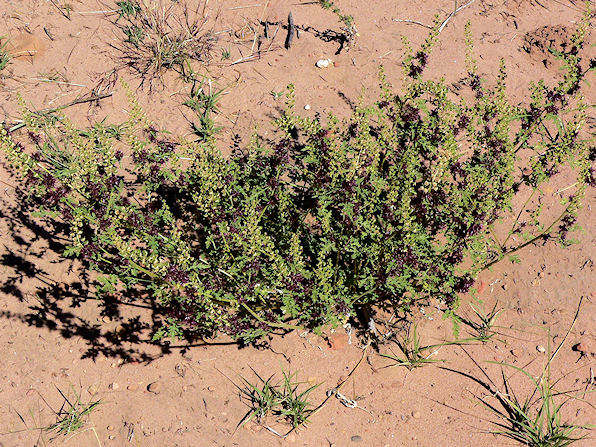Xeriscape Landscaping Plants For The Arizona Desert Environment.
Pictures, Photos, Information
Descriptions, Images, & Reviews.
Shrubs.
Burroweed, Ambrosia dumosa.
We Are Proud Of Our SafeSurf Rating!
Click On Any Of The Following Links By Amazon.Com
For Books, & Videos About Wildflowers Of Arizona & The Southwest USA. No Obligation!
 |
| Burroweed. Ambrosia dumosa. All Photos Courtesy: Wikipedia, the free encyclopedia. |
|---|
 |  |
| Burroweed. Ambrosia dumosa. | Burroweed. Ambrosia dumosa. |
|---|---|
 |  |
| Burroweed. Ambrosia dumosa. | Burroweed. Ambrosia dumosa. |
 /
/

Burroweed.
We wish to thank Wikipedia, the free encyclopedia for some of the information on this page. We share images and information with Wikipedia. While this plant is recommended by the Arizona Municipal Water Users Association, WE STRONGLY RECOMMEND THAT YOU DO NOT USE IT!! Ambrosia are considered by many to be noxious weeds and are listed among some of the leading plants that cause allergies. Their burs have a habit of getting caught into clothing. With that being said, ranchers do like the plants since the flowers are edible by cattle and sheep. Ambrosia dumosa is a highly branched, drought-deciduous, perennial shrub 8 inches to 40 inches in height and width. Its younger stems are covered with soft gray - white hairs. It has tiny, slightly obvate leaves with soft gray-white hairs, that are 1 to 3 times pinnately compound, or deeply lobed, and clustered on short branches. Its inflorescence is yellow with tiny staminate and pistallate flower heads on a single plant (monoecious). Ambrosia dumosa has hairy, spiney, spherical bur-like fruits ranging in color from golden to purple to brown. Ambrosia dumosa, the burro-weed or white bursage, is a common constituent of the creosote-bush scrub community throughout the Mojave desert of California, Nevada, and Utah and the Sonoran Desert of Arizona and northwestern Mexico. Wind blown pollen from Ambrosia dumosa is said to be highly allergenic.
Quick Notes:
Height: Up To about 40 inches tall and about 40 inches wide.
Flowers: On an inflorescence, of male and female heads (plant monoecious). Yellow, the staminate heads have many flowers and are 3 to 5 mm in diameter with a 5 to 8 lobed involucre. The pistillate heads are 2 flowered and lack a corolla.
Flowering Time: Mid March to June and September to November.
Fruit: Spherical bur-like fruits, colored from gold, to purple, to brown. Covered with microscopic hairs, the fruit has 12 to 35 flat and straight spines which are 1/4 to 1/3 inches in length and scattered over the surface.
Leaves: Dull green 1 - 3 times pinnate leaves mostly clustered, 1/8 to 3/8 inch long, with 1-3 short obtuse lobes, generally clustered on short branches.
Found: The USDA claims it is native to the USA (AZ, CA, NV, UT). It is also native to regions of northwestern Mexico; Baja Norte, Baja California, & Sonora.
Hardiness:
Soil pH requirements:
Sun Exposure:
Elevation: 0 to 5,842 feet.
Habitat: Creosote Bush Scrub, Joshua Tree Woodlands.
Miscellaneous: Photos Courtesy: Wikipedia, the free encyclopedia. WE STRONGLY RECOMMEND THAT YOU DO NOT USE THIS PLANT!!.
|



We Are Proud Of Our SafeSurf Rating!
Click On Any Of The Following Links By Amazon.Com
For Books, & Videos About Xerioscape Plants Of Arizona & The Southwest USA. No Obligation!
Back To Arizona Wild Flowers Home Page.
Back To Arizona Wild Flowers; Yellow Flowers Page Nine.
Back To Arizona Xeriscape Landscaping Main Page.
Back To Xeriscape Shrubs Page Eight.
Back To DeLange Home Page
© 1966 - Present, Audrey, Eve, & George DeLange
| © 1966 - Present, Audrey, Eve, & George DeLange |


